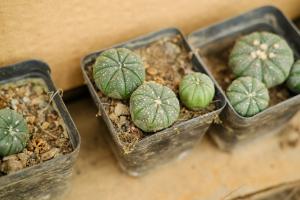Introduction
Water is essential for the survival of plants. Without water, plants cannot perform essential functions such as photosynthesis and nutrient uptake. Therefore, understanding how water leaves plants is crucial in understanding how plants regulate their water content and maintain their health. In this article, we will explore the different mechanisms by which water leaves plants.
Transpiration
Transpiration is the primary mechanism by which water leaves plants. It is the process of water loss through the stomata of leaves. Stomata are tiny pores on the surface of leaves that allow for gas exchange. During transpiration, water evaporates from the surface of the leaves and escapes through the stomata. This process is essential for maintaining water balance in the plant.
Guttation
Guttation is a mechanism by which water leaves plants that is less well-known than transpiration. It involves the excretion of excess water through the tips of leaf margins. Unlike transpiration, guttation occurs primarily during the night when the air is humid, and the stomata are closed. Guttation is common in plants with large roots, such as corn and wheat.
Root Pressure
Root pressure is another way that water leaves plants. It is the force exerted by the roots in pushing water up through the stem and out of the leaves. This mechanism is responsible for the movement of water in plants with no transpiration, such as in the case of young seedlings. However, root pressure is not a significant force in most mature plants.
Cuticular Transpiration
Cuticular transpiration is the process of water loss through the waxy layer on the surface of leaves. This mechanism is mainly responsible for water loss in plants in arid environments, where transpiration is limited due to the closure of stomata. Cuticular transpiration is also vital for maintaining a healthy balance of water and nutrients in the plant.
Conclusion
In conclusion, water leaves plants through several mechanisms, including transpiration, guttation, root pressure, and cuticular transpiration. These mechanisms are crucial for maintaining the water balance in plants, and understanding them is crucial for the growth and survival of plants. By learning more about how water leaves plants, we can develop better strategies for plant growth and help ensure that the Earth's ecosystems remain healthy and sustainable for generations to come.

 how many times do yo...
how many times do yo... how many planted tre...
how many planted tre... how many pine trees ...
how many pine trees ... how many pecan trees...
how many pecan trees... how many plants comp...
how many plants comp... how many plants can ...
how many plants can ... how many plants and ...
how many plants and ... how many pepper plan...
how many pepper plan...






























